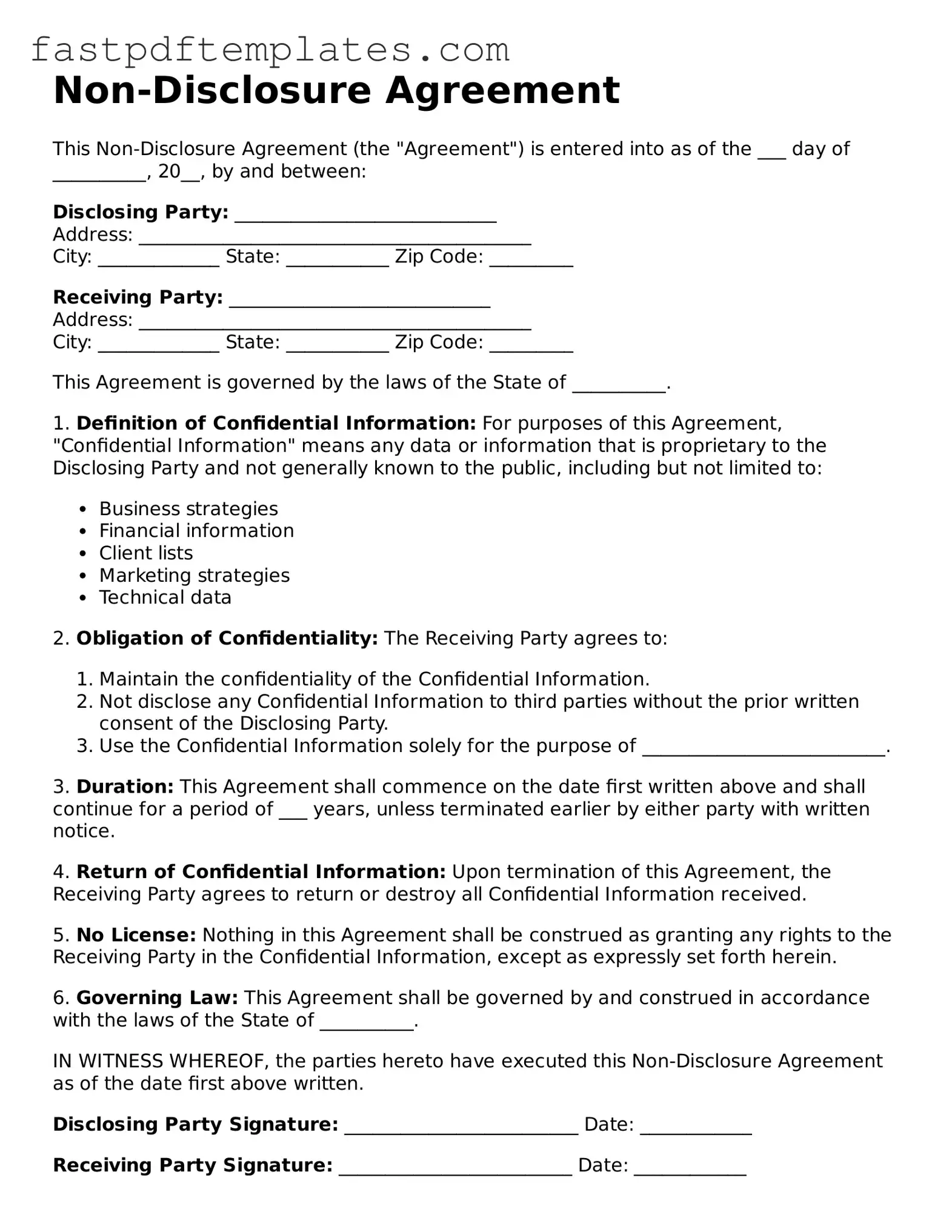Non-Disclosure Agreement
This Non-Disclosure Agreement (the "Agreement") is entered into as of the ___ day of __________, 20__, by and between:
Disclosing Party: ____________________________
Address: __________________________________________
City: _____________ State: ___________ Zip Code: _________
Receiving Party: ____________________________
Address: __________________________________________
City: _____________ State: ___________ Zip Code: _________
This Agreement is governed by the laws of the State of __________.
1. Definition of Confidential Information: For purposes of this Agreement, "Confidential Information" means any data or information that is proprietary to the Disclosing Party and not generally known to the public, including but not limited to:
- Business strategies
- Financial information
- Client lists
- Marketing strategies
- Technical data
2. Obligation of Confidentiality: The Receiving Party agrees to:
- Maintain the confidentiality of the Confidential Information.
- Not disclose any Confidential Information to third parties without the prior written consent of the Disclosing Party.
- Use the Confidential Information solely for the purpose of __________________________.
3. Duration: This Agreement shall commence on the date first written above and shall continue for a period of ___ years, unless terminated earlier by either party with written notice.
4. Return of Confidential Information: Upon termination of this Agreement, the Receiving Party agrees to return or destroy all Confidential Information received.
5. No License: Nothing in this Agreement shall be construed as granting any rights to the Receiving Party in the Confidential Information, except as expressly set forth herein.
6. Governing Law: This Agreement shall be governed by and construed in accordance with the laws of the State of __________.
IN WITNESS WHEREOF, the parties hereto have executed this Non-Disclosure Agreement as of the date first above written.
Disclosing Party Signature: _________________________ Date: ____________
Receiving Party Signature: _________________________ Date: ____________
